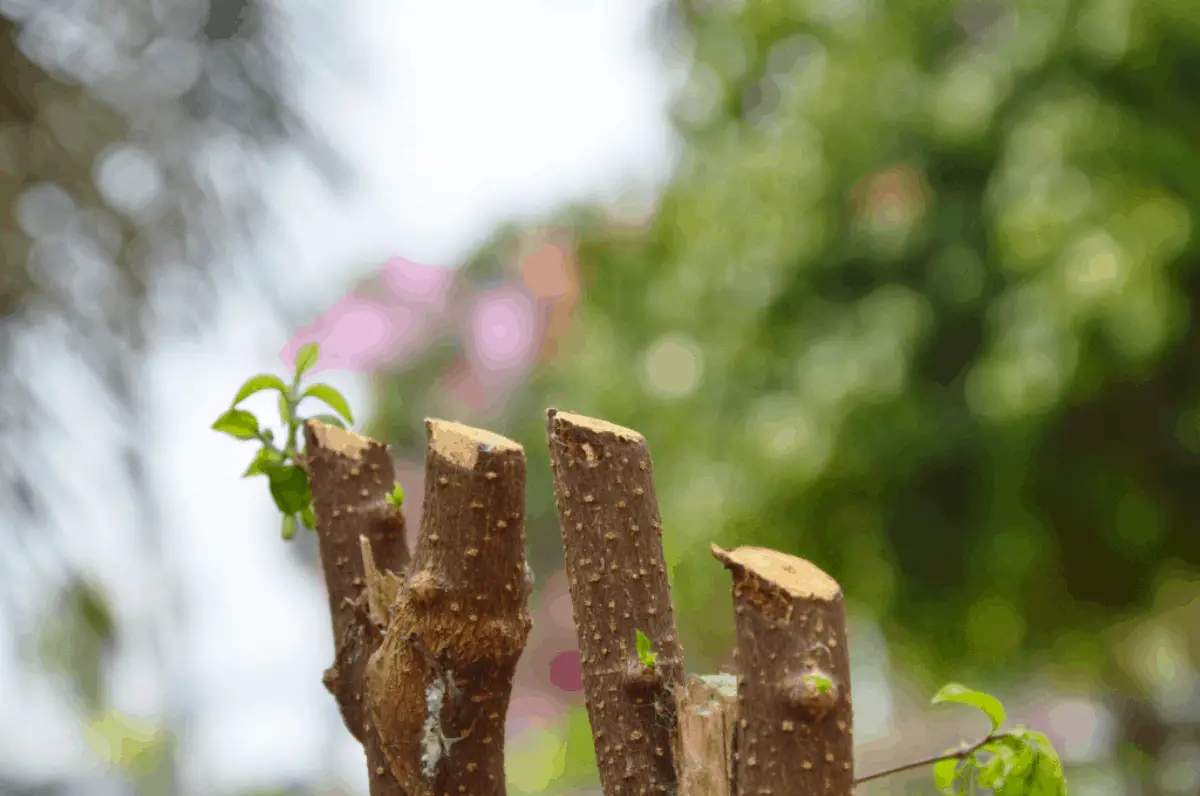Last Updated on October 9, 2024
Many people have attested to the medicinal properties of the Moringa plant. It helps regulate blood sugar levels, improve sleep, lower cholesterol, and encourage heart health. This is why a lot of interest has been invested in how to grow it.
However, not many know how to prune it as part of its maintenance. In fact, ordinary individuals without a horticulture background do not even know the concept of pruning. This is why, in this article, we are going to discuss how to prune Moringa tree correctly.
Table of Contents
Pruning
Before we proceed to how to prune a Moringa tree, let us first understand what is pruning. Pruning is a silvicultural and horticultural practice. It involves the removal of unwanted roots, leaves, and branches. There are many different techniques on how to prune a tree, but the compatibility depends on its kind. The size of the tree and its condition is also a variable.
According to treesaregood.org, pruning is essential in tree maintenance. It helps keep the tree healthy and the environment safe as well. With pruning, there are lesser tendencies for falling dead branches that may cause injuries and damage to properties. Pruning also encourages better and faster growth for some plants. For Moringa, it is one of the plants that enjoys being pruned.
Types of Equipment Needed for Pruning a Moringa Tree
Now that we have understood the concept of pruning let us dive into how to prune a Moringa tree. However, similar to doing any project, you first have to prepare the materials needed for the task. Here are the possible materials and equipment you need for pruning a moringa tree.
- Pruning Shears
This is the primary tool used in pruning. It is used for cutting branches, leaves, and roots. It is a handheld device that can thick twigs and branches that are about ¾ of an inch thick.
- Loppers
Compared to pruning shears, loppers are ideal for cutting thicker branches. It can cut branches that are up to 2 ½ thick.
- Pole Pruner
A pole pruner is a long handheld device that has a sharp hook-like edge. It is used for reaching branches in a taller location.
- Pruning Saw
A pruning saw has jagged edges used to cut branches that are up to 5 inches thick.
- Hedge Shears
The hedge shears are the middle variety between a pruning shear and a lopper. It can cut up to 1 1/4 thick branches.
Before using these tools, it is ideal to disinfect them. To do that, you need to follow the standard horticulture solution. It involves mixing 1 part water and 1 part alcohol with 70% isopropyl. After that, soak the pieces of equipment for 5 minutes, dry it, and it is ready to go.
The Process of Pruning a Moringa Tree
Now that the pieces of equipment needed has been prepared, you are now ready to start the pruning process. Here is a step by step process of how to properly do it.
- Assess the Tree
The first thing that you have to do in pruning your Moringa tree is to assess it. Look at if it has dead leaves and branches. If it does, prioritize removing it in the next step.
- Trim
In some cases where the morning tree that you have is young, you can simply prune it by trimming two inches above the soil. Do not worry if your tree ends up looking like a twig as it will eventually grow better than it was before. Watch this video by Moringa for Life to know more.
- Pinch Off
This step applies to young Moringa Trees. You do this by simply pinching the end of the stem with new growth. It will encourage more leaves production.
- Cut (Optional)
This step is intended for more mature trees that have a thicker trunk. You do this by simply cutting the branches of the Moringa tree. Just like pinching, the idea is that the new growth will have better leaves production. See how Edge of Nowhere Farm was able to do this.

Take note that Moringa trees hibernate during winter or cold season. This is why you should not be discouraged if you see your trees looking lifeless. When the weather conditions are more ideal, it will eventually start thriving again.
Aside from that, Moringa trees are one of the plants that like being prune. Pruned Moringa results in better quality and quantity of leaves production.
Things to Remember
Pruning a Moringa tree can be taxing, especially if it is a big tree or there are multiple of them. However, here are some reminders that you need to keep in mind in pruning a Moringa tree.
- Moringa Trees Grows Fast
The Moringa tree is an aggressive growing plant. This is why when you prune it, it may immediately grow after a couple of weeks. To keep it maintained, it is ideal that you prune it regularly. Doing so will also significantly benefit the health of the tree itself.
- Avoid Branch Over Growth
In the case of a Moringa tree, branch overgrowth makes the tree unable to produce leaves. The leaves of the Moringa is what is usually harvested to be transformed into various medicinal products.
- Continue Other Growing Practices
Practices such as putting manure should not be neglected despite pruning a Moringa tree. The best way to achieve a healthy tree is to load it up with nutrients, as well.

Final Thoughts
Some may find growing of Moringa tree as intricate; however, compared to other trees, it actually requires lower maintenance. When you think of it, pruning is nothing compared to the benefits that you can get from the tree. If you happen to have any further questions, do not hesitate to comment down below. Overall, here is how you prune a Moringa tree:
-
-
-
- Prepare all the pieces of equipment needed
- Assess the tree
- Trim the tree
- Apply Pinch off method
- Cut if necessary
-
-

Lacey is an environmental enthusiast and passionate advocate for living green and sustainable. She believes that everyone can make a difference, no matter how small. Lacey is dedicated to reducing her own carbon footprint and educating others on the importance of living greener. She is an advocate for green energy and sustainable practices. She is an active member of her local community, volunteering with local conservation efforts, and taking part in sustainability initiatives. Lacey is a firm believer that the only way to ensure a sustainable future is to work together and make small, but important changes.

